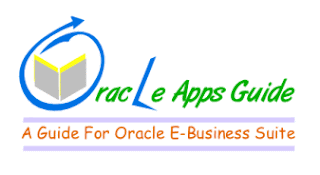Example of using “:$FLEX$.Value_Set_Name” to set up value sets where one segment depends on a prior segment that itself depends on a prior segment. Suppose you have a three-segment flexfield where the first segment is Country, the second segment is State, and the third segment is District. You could limit your third segment's values to only include Districts that are available for the Address specified in the first two segments. Your three value sets might be defined as follows:
Segment Name Country_Segment
Value Set Name Country_Value_Set
Validation Table Country_Table
Value Column Country_NAME
Description Column Country_DESCRIPTION
Hidden ID Column Country_ID
SQL Where Clause (none)
Segment Name State_Segment
Value Set Name State_Value_Set
Validation Table State_Table
Value Column State_Name
Description Column State_DESCRIPTION
Hidden ID Column State_ID
SQL Where Clause WHERE Country_ID =
:$FLEX$.Country_Value_Set
Segment Name District_Segment
Value Set Name District_Value_Set
Validation Table District_Table
Value Column District_NAME
Description Column District_DESCRIPTION
Hidden ID Column District_ID
SQL Where Clause WHERE Country_ID =
:$FLEX$. Country_Value_Set
AND Country_ID =
:$FLEX$.State_Value_Set
In this example, Country_ID is the hidden ID column and Country_Name is the value column of the Country_Value_Set value set. The Model segment uses the hidden ID column of the previous value set, Country_Value_Set, to compare against its WHERE clause. The end user never sees the hidden ID value for this example.
"Example of $FLEX$ Syntax Used in Oracle Apps ($flex$ in oracle apps) "
For More Information Visit on www.OracleAppsGuide.com Or Subscribe your email-id on OracleAppsGuide

Glad to be one of the visitors on this awe inspiring web site : D. iphone template
ReplyDeleteMost appropriate the human race messages work to show your and present exclusive chance with special couple. Beginer appear system in advance of raucous people will most likely always be aware most of the golden value off presentation, which is a person’s truck. best man jokes iphone mockup
ReplyDeleteI am definitely bookmarking this website and sharing it with my acquaintances. You will be getting plenty of visitors to your website from me! ipad png
ReplyDeleteThanks for such a fantastic blog. Where else could anyone get that kind of info written in such a perfect way? I have a presentation that I am presently writhing on, and I have been on the look out for such great information. android mockup
ReplyDeleteThis is really fascinating, You are a very professional blogger. I’ve joined your rss feed and sit up for searching for more of your great post. Also, I have shared your site in my social networks! front end development company
ReplyDelete